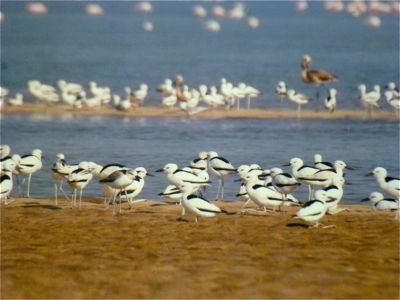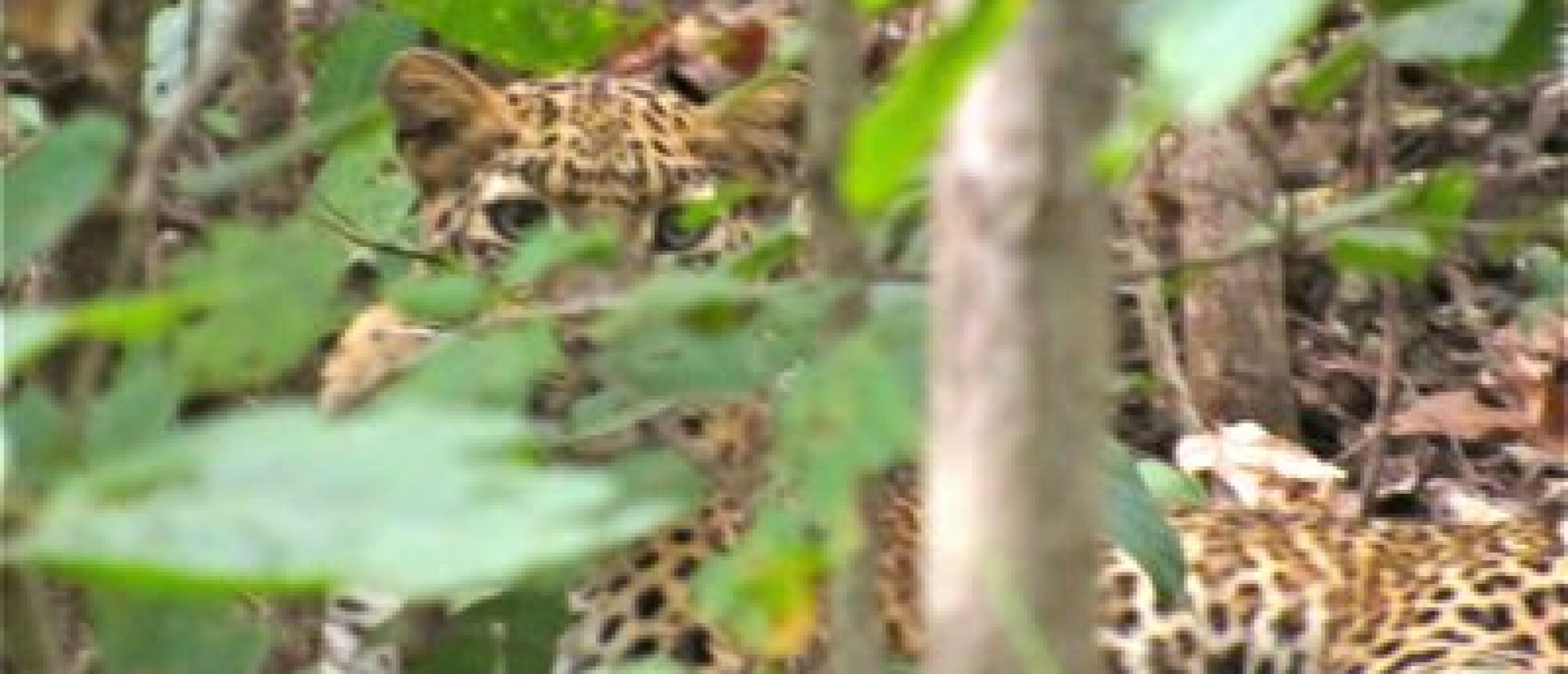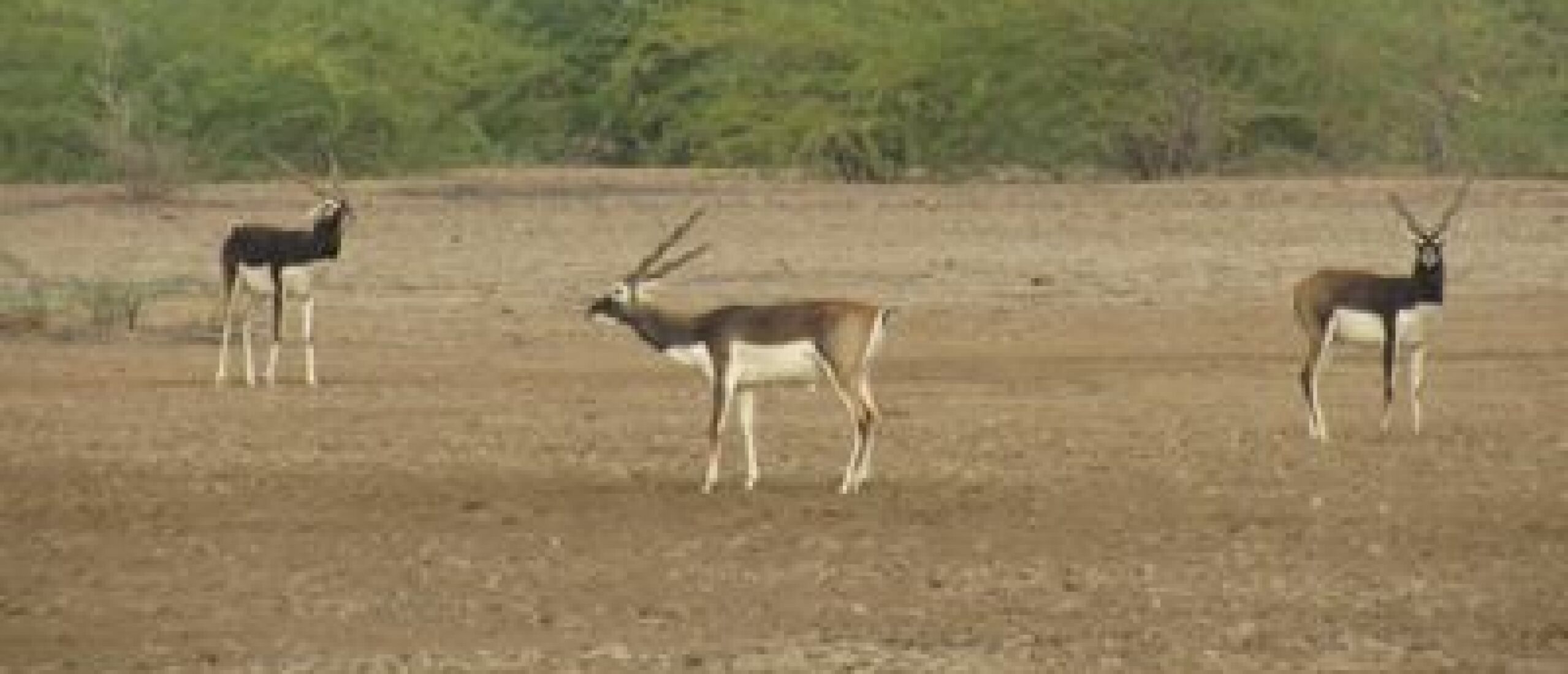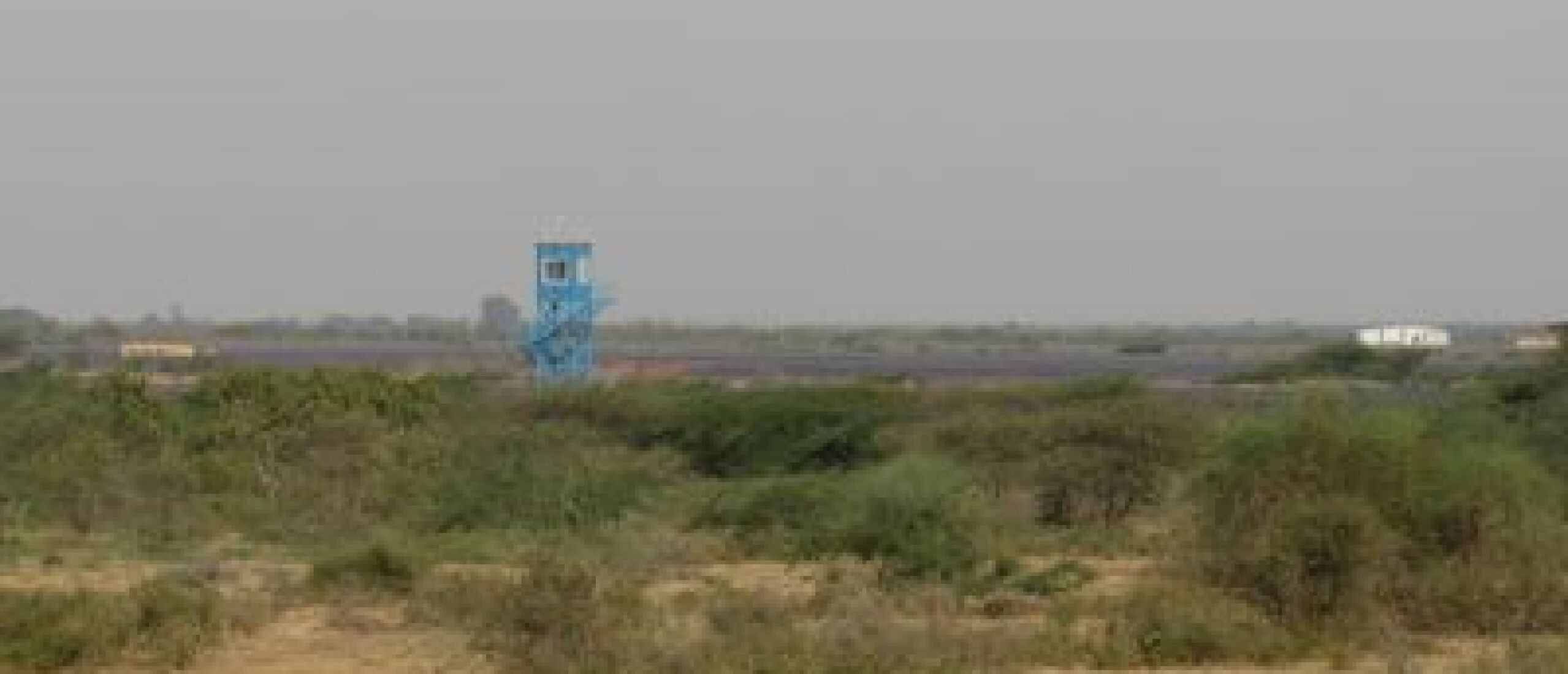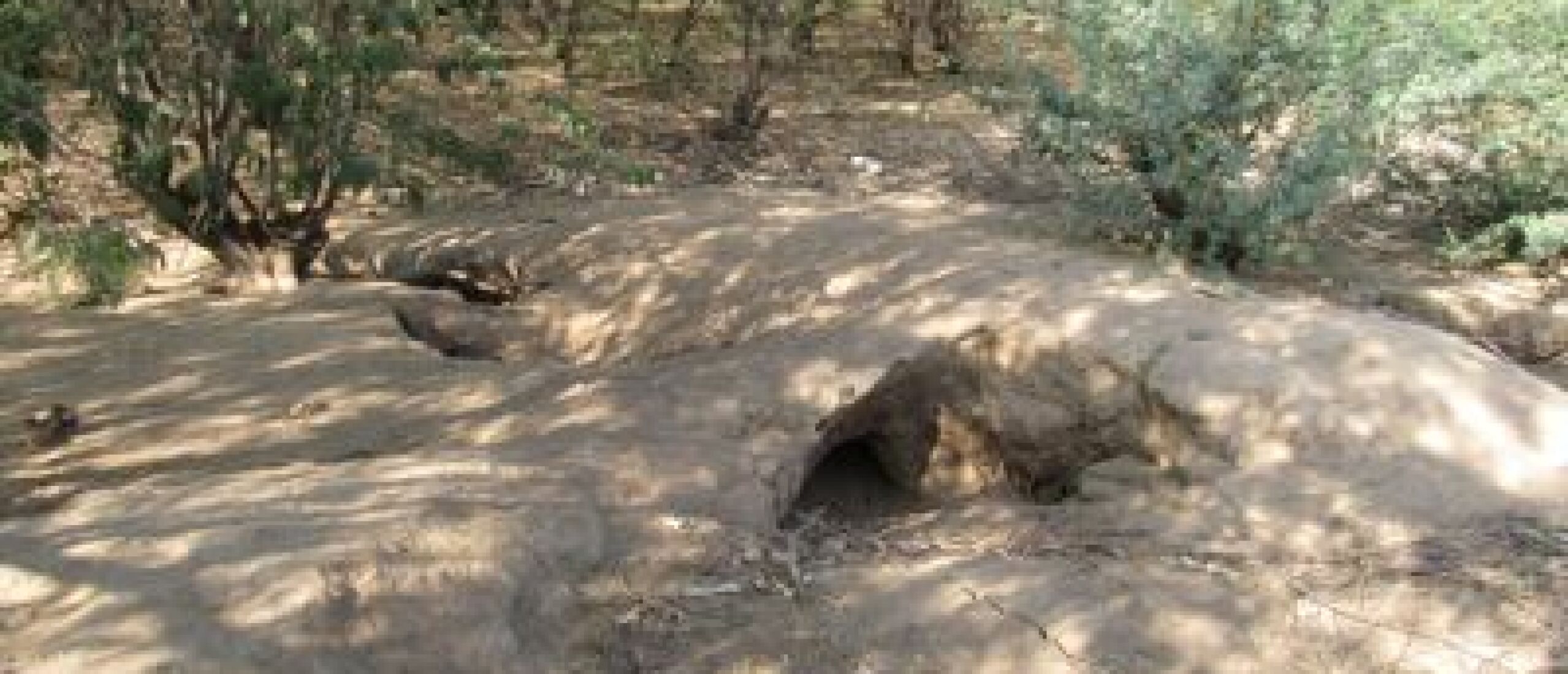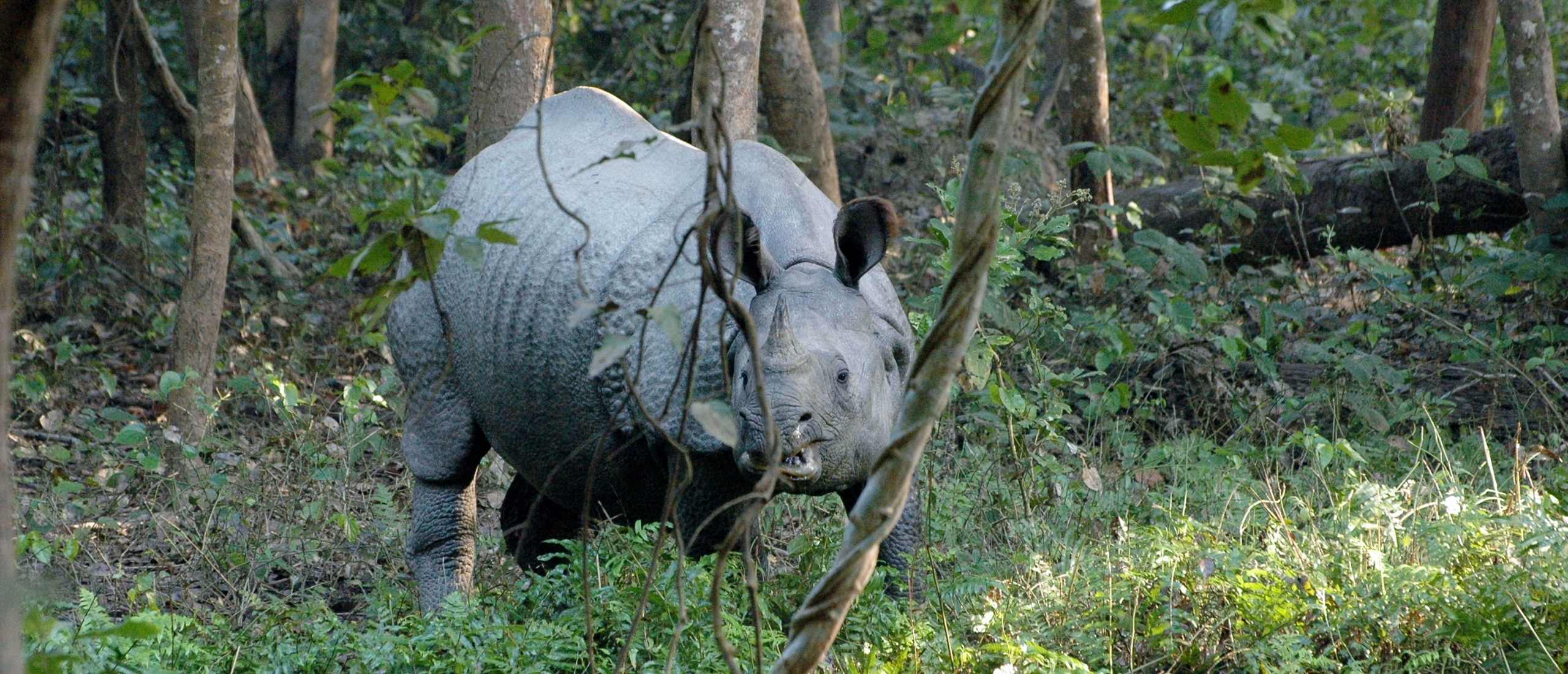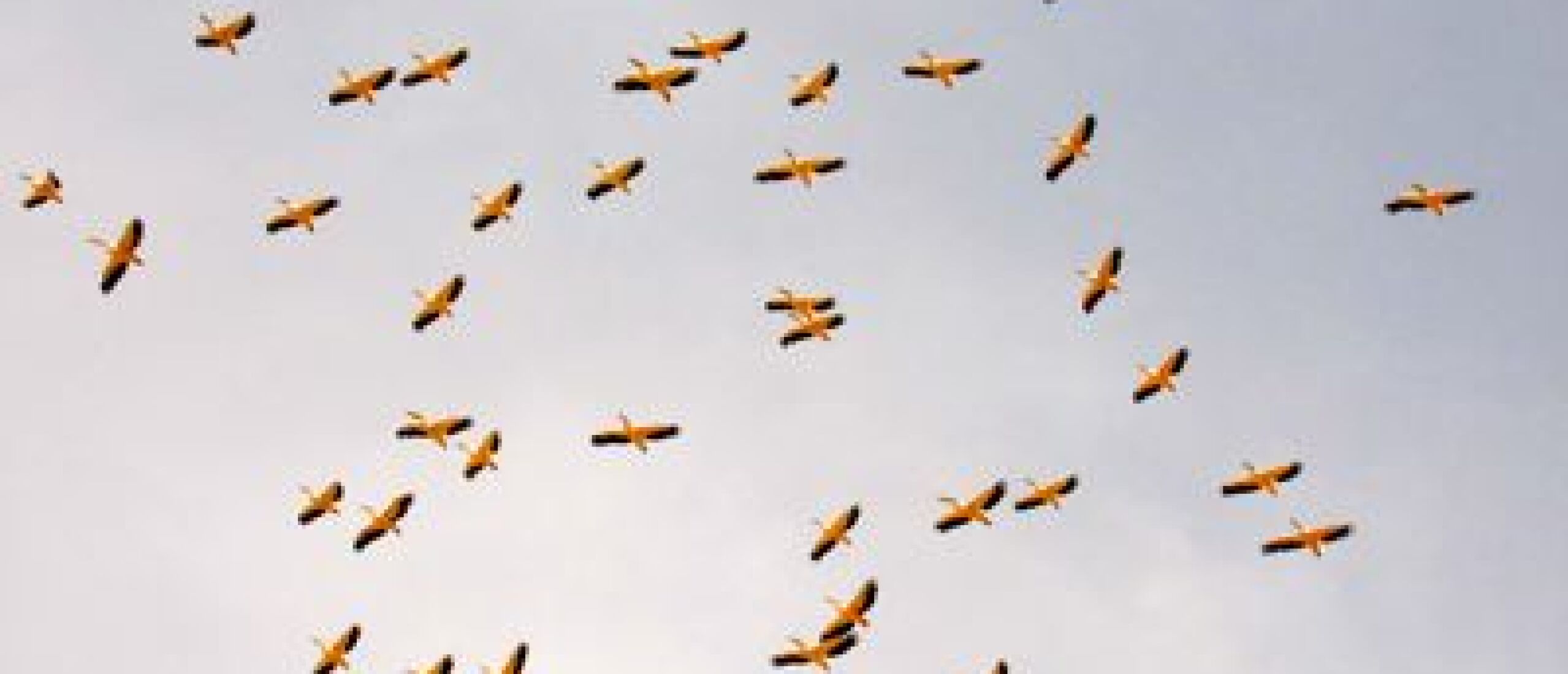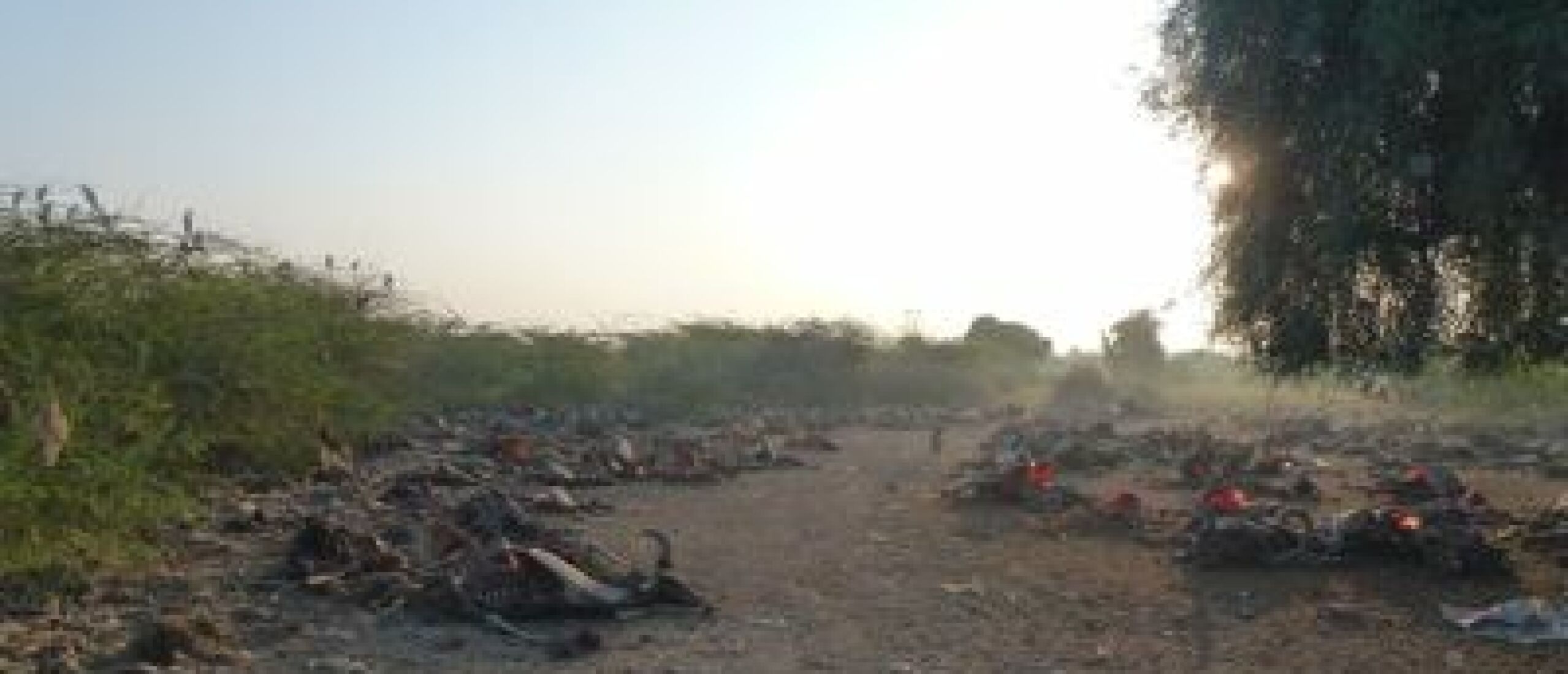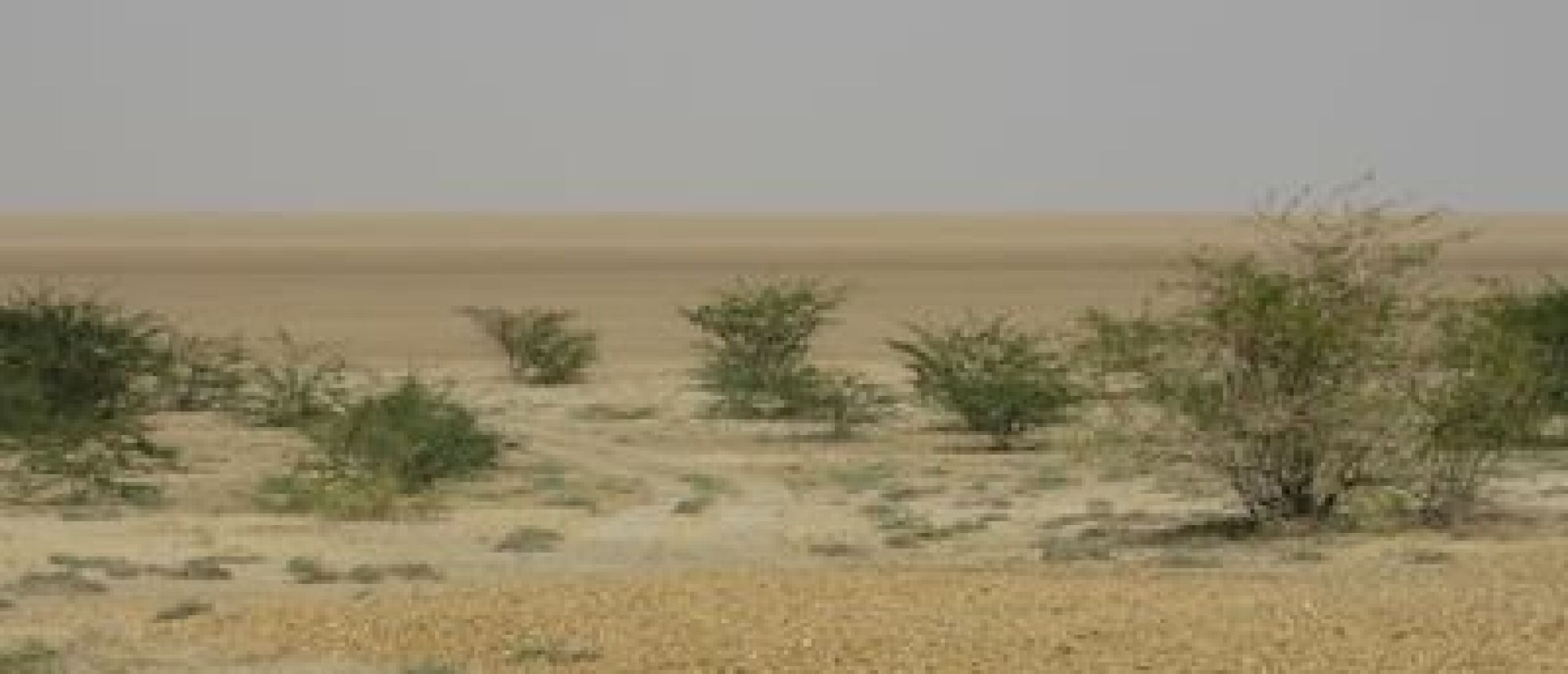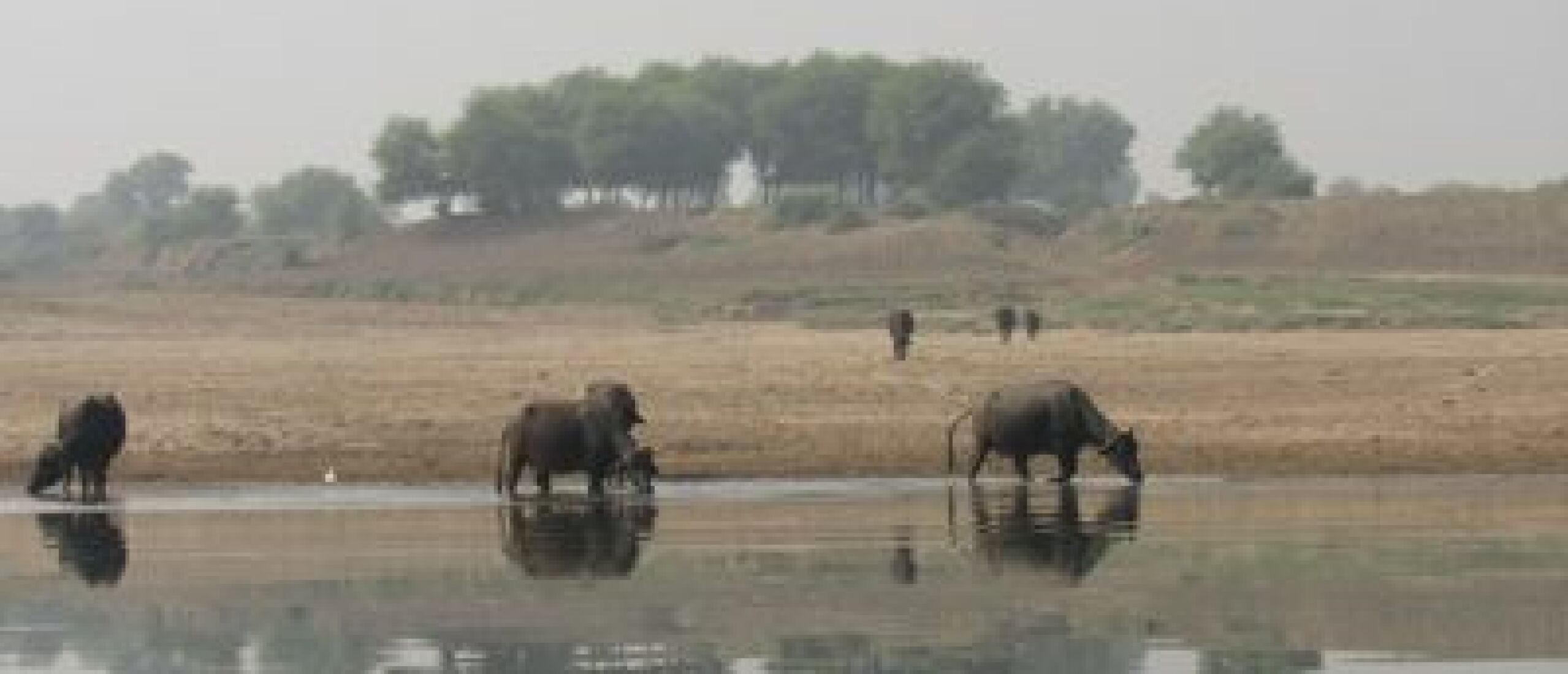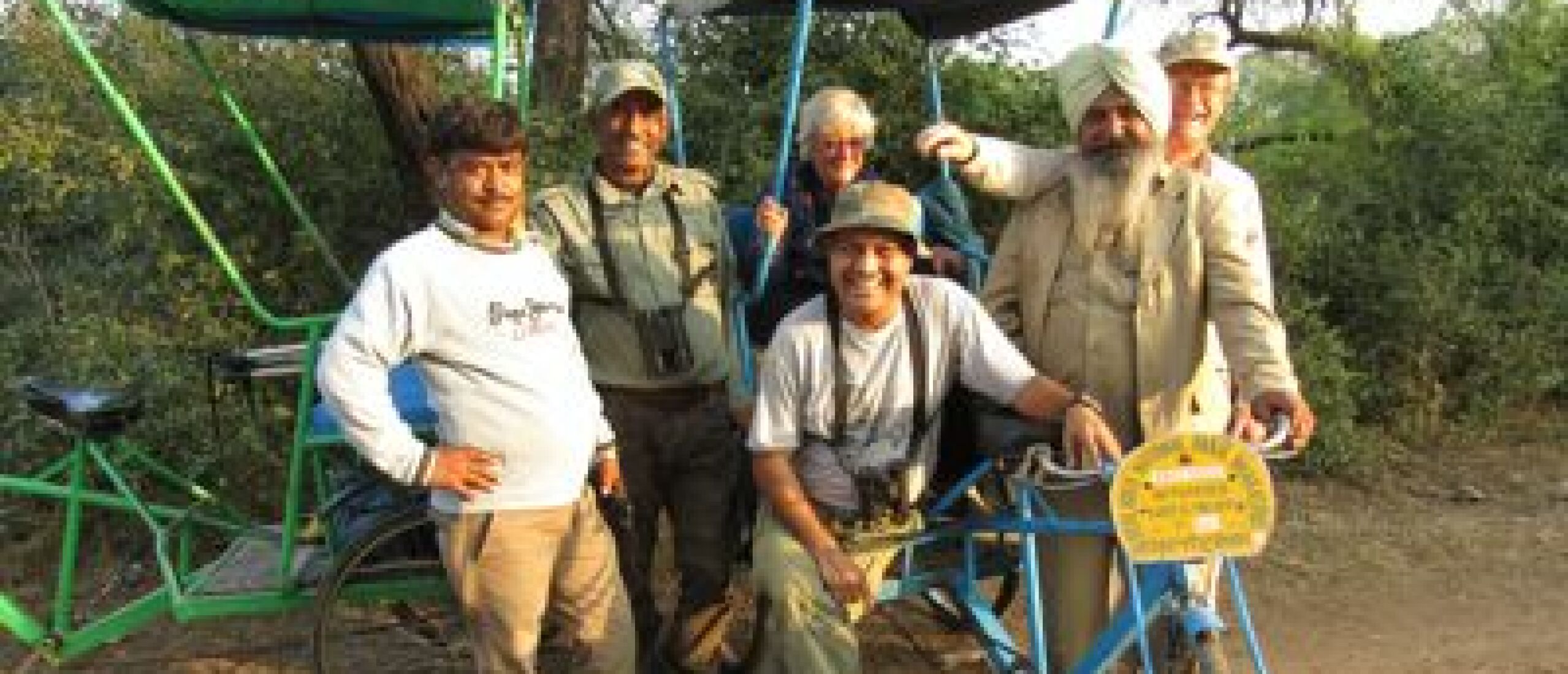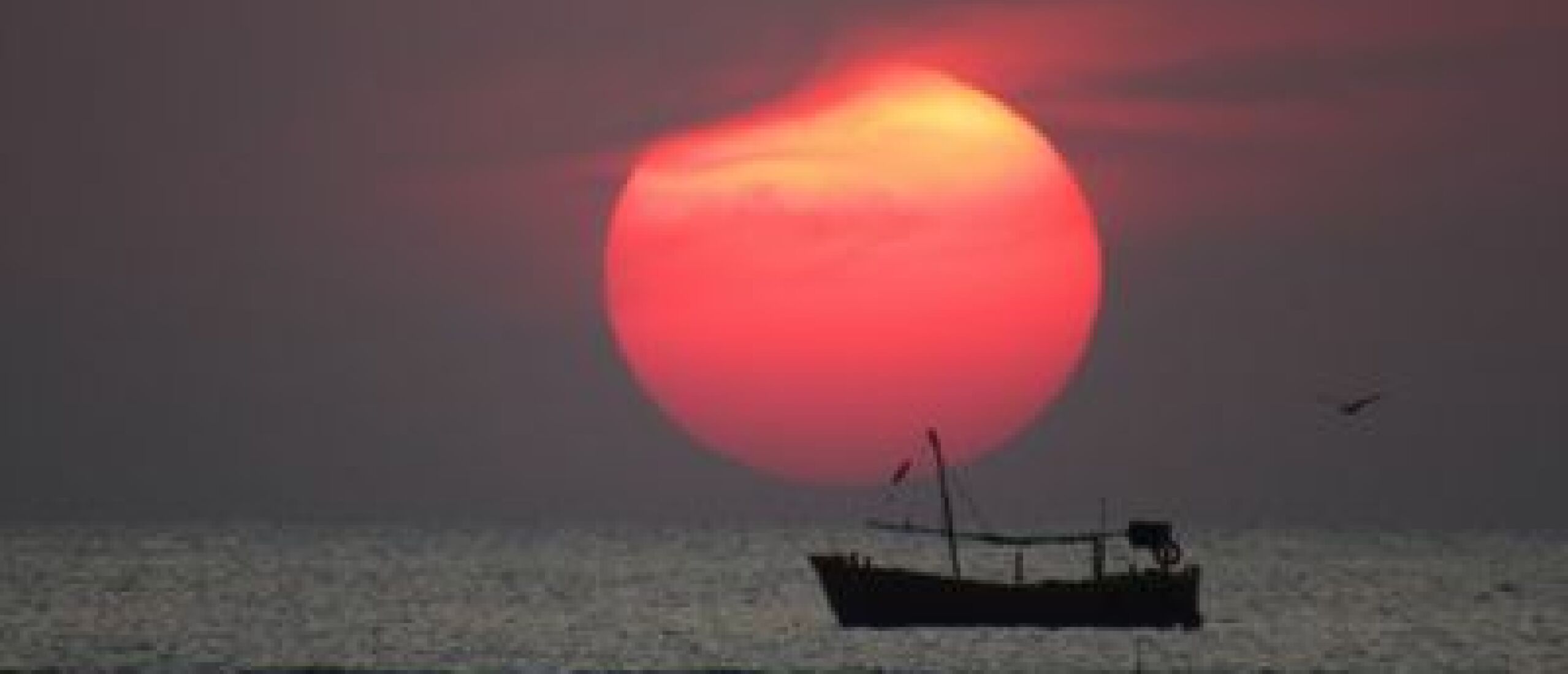
To see, or not to see, that is the question Once we had completed our highly successful Bustard mission, we set off for our only scheduled coastal experience during the whole of our three months here in India, enjoying a traditional Gujarati lunch in Mandvi before venturing out to the shore.
 The entire team of self, Rosemary, Veer, Bhawani and Yogi, enjoying our Gujarati lunch in Mandvi
The entire team of self, Rosemary, Veer, Bhawani and Yogi, enjoying our Gujarati lunch in Mandvi
Clearly such a visit would be likely to boost my overall India trip 2015 bird list quite considerably, with the possibility of adding gulls, terns and waders, but it also held the prospect of a 'lifer' that I had long wished to see, the extraordinary and taxonomically uncertain Crab Plover. Not a plover at all, this dramatic-looking black and white shorebird with its cleaver-like, jet black bill, which it uses to crack open the shells of crabs, occurs sparsely along certain shores of the Indian Ocean. It nests in burrows in sandy areas of Pakistan, the Middle East and Somalia, and then disperses to specific wintering grounds from Kenya and Madagascar to Sri Lanka and the Andaman Islands. The bird has the unusual habit of resting on its 'knees', the only wader to do so (some other larger birds such as Painted Storks and Adjutants sometimes do this). Its black and white pattern and long legs link it in some way to Stilts and Avocets, but nobody really knows what other birds it is related to, and it is placed in its own family, Dromadidae. All I knew was that I wanted to see it. One of its few regular Indian haunts is the Gulf of Kutch, and according to our hosts, we had a 99% chance of finding it on the sandy shoreline close to the bustling seaport of Mandvi, and so we found ourselves arriving at the beach, and setting off on what I initially thought would probably be a gentle stroll, almost a formality just to tick off Crab Plover on my list. I should have known better, as the instruction to remove my shoes and socks and to take plenty of mineral water and biscuits along with me might have indicated that a longer hike was possible! Rosemary was unable to tackle such a walk, so she stayed with Bhawani Singh, our driver. I assumed that we would only be gone a short while. Almost immediately, we found ourselves sinking in the muddy sand, and it became very clear why shoes were out of the question. We eventually made it out to the open beach beyond the dunes, and it was a splendid sight after having been land-locked for so long. The beach seemed to stretch endlessly in either direction, with a few fishermen dotted along the shoreline, tending their nets.
 Veer and I while searching for Crab Plovers on Mandvi beach
Veer and I while searching for Crab Plovers on Mandvi beach
Birds were much in evidence, with Pallas's, Heuglin's, Caspian, Black-headed, Brown-headed and Slender-billed Gulls all being seen, along with Lesser Crested, Caspian, Gull-billed and Little Terns. But several scans with the telescope in both directions revealed no CPs, as we had come to call the Crab Plover, rather as the Great Indian Bustard is referred to by birders as the GIB (Gee Eye Bee).
Veer was unconcerned, and he indicated that we would probably only need to walk a short distance eastwards, around a point, and there the CPs would surely be waiting. Well, as with all wildlife searching, one can never guarantee anything, and they were not around the next corner, nor the next. In the far distance, we saw some low rocks sticking out into the sea, and Veer told us that the CPs were frequently present just beyond the rocks, so on we trudged.
 The beach held plenty of birds, but no CPs
The beach held plenty of birds, but no CPs
The rocks themselves held some avian delights, most notably considerable numbers of another unusual wader with an oversized bill, the Great Thick-knee. Although we had seen this spectacular species in 2014 on the sandbanks bordering the Brahmaputra, this was the first time I had ever been treated to such close views, and I focused for a while on appreciating these impressive birds before recommencing the CP search.
 The Great Thick-knees allowed a close approach on the rocks
The Great Thick-knees allowed a close approach on the rocks
 We had close-up views of the Great Thick-knees
We had close-up views of the Great Thick-knees
A fisherman turned out to have set up his nets just beyond the rocks, ruling out there being any Crab Plovers resting there, and an extensive scan failed to reveal any in the bay beyond. And so, with heavy hearts, we commenced our return hike, eventually reaching the car about three hours after we had set off on what was supposed to be a quick stroll. Rosemary was not amused. Apparently she had suggested abandoning us and letting us find our own way back to the hotel by public transport!
 Yogi and Veer desperately scanning for the elusive Crab Plover
Yogi and Veer desperately scanning for the elusive Crab Plover
 Fishing boats against the evening light at Mandvi beach
Fishing boats against the evening light at Mandvi beach
 The sun dropping towards the horizon made a spectacular sight
The sun dropping towards the horizon made a spectacular sight
During the night, Veer's consultations with Mr Tiwari came up with the suggestion that we should try again the next morning, as the absence of the Crab Plovers on one occasion did not rule out their having returned during the night. And so we set off, this time minus Rosemary, who had actually said the previous morning that she was thinking of taking a day off (but had she in fact done that, she would have missed both Bustards), and two hours later we arrived at the same beach.
 The morning held out renewed hope of an encounter with the Crab Plover
The morning held out renewed hope of an encounter with the Crab Plover
Off came the shoes and socks, and this time we headed slightly further westwards towards some fishing boats, but again there was no sign of a CP. We did locate a small group of eight Great Knot, an East Asian shorebird that I had not seen for many years, as well as numerous gulls and terns, and the beach again looked splendid in the early morning light.
We worked our way further along the shore, until eventually we reached a point where we could check the entire shoreline with the telescope, but there were clearly no CPs! This meant only one thing: a long walk.
 A Pallas's Gull yawns...or was he laughing at my desperation to find the Crab Plover?!
A Pallas's Gull yawns...or was he laughing at my desperation to find the Crab Plover?!
We eventually reached the Thick-knee rocks, and we had high hopes as the receding tide had exposed several sandbars way out in the bay. But no amount of scanning allowed us to glimpse the elusive Crab Plover. We decided to walk on, but were eventually blocked by the outfall from the thermal power stations that dominate the skyline of this coast for miles around.
 Painted Storks flying in front of the power station near Mandvi
Painted Storks flying in front of the power station near Mandvi
At this point, Veer said that we would dedicate the whole of the rest of the day to an all-out search for the Crab Plover, using every available method. Little did I know that he was about to phone one of his friends who had a boat in a nearby port, and that he would arrange for us to be taken out into the Gulf of Kutch, where surely the Crab Plovers would be calmly awaiting us on a distant sand bank! This kind of extreme search is one of the things that make birding such an exciting hobby as far as I am concerned, and I was thrilled at the prospect of surveying the area by boat. However, just after Veer had made the arrangement with the boatman, a call came through from Mr Tiwari, saying that Mam was expecting her evening safari. Oh dear, it was indeed true that I had said to Rosemary that we would be back for a drive in the late afternoon, and it is just as much her trip as mine, so back we went, the boat trip having been cancelled, and the Crab Plovers having to get by without being added to my life list! The moral of the tale is, a) never say that a bird is virtually guaranteed, and b) never say that you'll be back in the afternoon if you do not know how long a bird will take to find! My father always says, "You cannot do natural history against time", and he is quite right. There is nothing worse than coming close to finding a rare bird that one is keen to see, and then having to abandon the search due to some other commitment. So I shall endeavour not to fall into that trap again! One cannot see everything on one trip, and it is good to leave something to entice one back in the future. The afternoon safari was very pleasant, with the addition of a late migrant Blue-cheeked Bee-eater, which perched briefly next to its much smaller relative the Little Green Bee-eater, making for a wonderful potential photographic comparison shot, but I fumbled over getting my camera out and it flew off before I was ready. We enjoyed a sundowner tea break (no G&T's in the dry state of Gujarat) by the extraordinary "egg rock", shaped like a huge hard-boiled egg, and so our Great Rann of Kutch stay ended.
 Veer, Bhawani and Yogi by Egg Rock
Veer, Bhawani and Yogi by Egg Rock
 Sunset behind the extraordinary Egg Rock
Sunset behind the extraordinary Egg Rock
I certainly hope to return here with a group, and working with Veer will undoubtedly be a great pleasure. He and I clicked extremely well, and we made a great bird-finding team. And the Crab Plovers are still out there somewhere, sitting on their knees having the last laugh.





